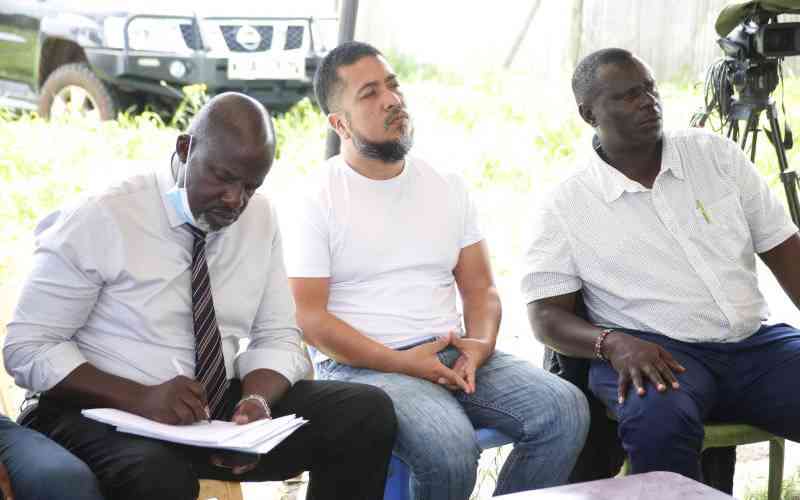Kenya: In a lecture titled An Image of Africa: Racism in Conrad’s Heart Of Darkness, Chinua Achebe accused Joseph Conrad, author of Heart of Darkness of being a racist. Not just that, but a “bloody racist”.
He would later change it to a thoroughgoing racist. You would say he was merely moving from pedestrian to highbrow. The charge had not changed. Only the language to save his face. Therefore, certain questions must follow: Whom did Achebe brand a racist? Was it Conrad the person? Whatever the case, what evidence did he have? How was that evidence adduced? Was it convincing? What motivated Achebe? Was he bitter, as Cedric Watts, the most competent commentator on his lecture has stated? Indeed, was Achebe being fair, nay, humane, to Conrad?
Achebe claimed in no particular order, that Conrad was obsessed with the word “nigger”, didn’t proffer speech to his black subjects and moreover, treated River Thames more differently from River Congo.
Further, Europe and whites were referred to in salutary terms. Africa was treated in passing; Conrad showed mock sympathy to the suffering of Africans, in sum: Conrad hated black people. A phrase beloved by Conrad’s detractors is imported into the debate. It is about the Haiti buck nigger about whom Conrad dreamt “for years afterwards.”
Yet this comment is about one nigger. Not all the niggers in Haiti. Moreover, what made this nigger dangerous was not his colour but his ambiguous character, pretending to be sick while well, and claiming to be fit while mortally ill. So being annoyed by one individual cannot constitute racism.
Achebe’s narrative of Conrad painting a picture of savage blacks contrasted with refined Europeans collapse when you are told that the Kurtz and the “pool fool”, the helmsman who died because he carelessly opened the shutter, hence allowing in a spear or arrow, are all the same. Sample this: “No, I cannot forget him, I missed my late helmsman awfully…..while his body was still lying in the pilot house……It was kind of partnership. He steered for me.”
Conrad’s own boss was a mere “pale plumpness in a frock coat (pg 24). Not only do white people bad mouth, lazy about pretending to be making bricks, they are also bewitched, they look unshaven, foolish, faithless, disgusting.
Kurtz’s best known attribute is not intelligence, genius or organising, “he had no learning and no intelligence…..his position came to him……because he was never ill…….health is a kind of power.”
The white lady or ladies Achebe makes a fuss about are given language only to mock them. They come through as naïve, foolishly trusting, unable to copy with knowledge.
Women(black and white) but mostly white since Conrad’s audience was European, “live in a world of their own” and must be left to stay in that fake, utopian world of laughable nirvana.
The savage woman, may jolly well exist only in a dream. She is more symbolic than existing. And at least, the novel does not fully deconstruct her.
The white women on the other hand, are real life figures; some who helped him get a job.
The Congo is described as a great river; Thames is also referred to as dark. And for heaven’s sake, darkness is used by Conrad to symbolise the mysterious nature of the treacherous human heart!
Without excessively belabouring it, to Conrad, the Congo River, the rainforest, the surroundings, these spellbind and overawe him.
He speaks of the forest in salutary terms. He stayed in Congo for mere months. He could not have ventured yonder into the villages. He only told us what he saw. He told it well. Achebe knew this. The novel is a short one. Achebe had read it.
Stay informed. Subscribe to our newsletter
So the Sussex professor Cedric Watts is being civil when he says, “there remains a saddening perversity about it… blacks have enough enemies, it is saddening to see Achebe attack one of their friends.”
Conrad’s disgust for the imperialistic project knows no bounds. Brussels is twice referred to as the sepulchral city. Its people (white Europeans) merely trespassing on his thoughts. They were ‘hurrying through the streets to filch a little money from each other, to gulp their unwholesome beer, to dream their insignificant and silly dreams.”
Yes, all of them. Not just Kurtz or the patchy Russians. Conrad had serious issues with the human persona.
To reduce him to a racist is cruel, absurd and unfair.
I have pored through countless reviews on Conrad. They range from works of Ross Murfin, Frederick Karl, Adena Rosmarin, Johanna Smith, Hillis Miller, Brook Thomas, Edward Garnet, FR Leavies, the cast.
I’m consoled by Murfin who says “Great works of literature….produce these unending, near cycles of strong thought……the possibility of saying something entirely new while speaking of something quite old in a language that our predecessors seem to have been almost ready to use.”
Achebe called Conrad “one of the greatest stylists of modern fiction.” How I wish he ended there.
Achebe, we would say, chose a formalist route before wading into quasi feminist approach in analyzing Conrad. Yet essentially, what readers look for is facts, logic, and fairness. When Conrad equates the savage drumbeats to European church bells, and debunks the cannibalism or enemy accusations against Africans, while mocking , parodying and castigating ivory theft, colonial incompetence and the stillborn idea of civilisation, surely this was our friend long before the Fabians.
That Achebe could pick and choose which sentences to read and which ones to overlook was sheer dereliction. His project while being anti intellectual, helped another generation of Conrad enthusiasts to sink their teeth better into Heart of Darkness.
Joseph Conrad, when you read his books, letters, communications, was a man of deep feelings and extremely sensitive. Heart of Darkness defies a leisurely one off quick read.With every read, new sentence, concepts and thoughts seem to pop up. But all told, let us not impose our bile and ill will on him.
— The writer is director at Yala Outcomes
 The Standard Group Plc is a
multi-media organization with investments in media platforms spanning newspaper
print operations, television, radio broadcasting, digital and online services. The
Standard Group is recognized as a leading multi-media house in Kenya with a key
influence in matters of national and international interest.
The Standard Group Plc is a
multi-media organization with investments in media platforms spanning newspaper
print operations, television, radio broadcasting, digital and online services. The
Standard Group is recognized as a leading multi-media house in Kenya with a key
influence in matters of national and international interest.
 The Standard Group Plc is a
multi-media organization with investments in media platforms spanning newspaper
print operations, television, radio broadcasting, digital and online services. The
Standard Group is recognized as a leading multi-media house in Kenya with a key
influence in matters of national and international interest.
The Standard Group Plc is a
multi-media organization with investments in media platforms spanning newspaper
print operations, television, radio broadcasting, digital and online services. The
Standard Group is recognized as a leading multi-media house in Kenya with a key
influence in matters of national and international interest.







